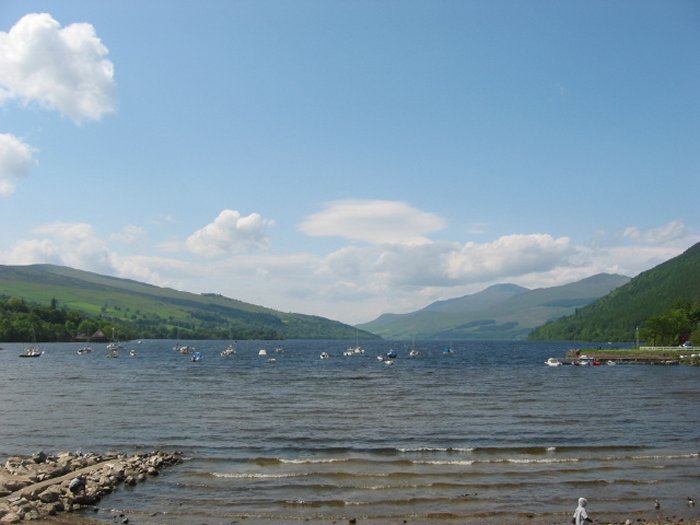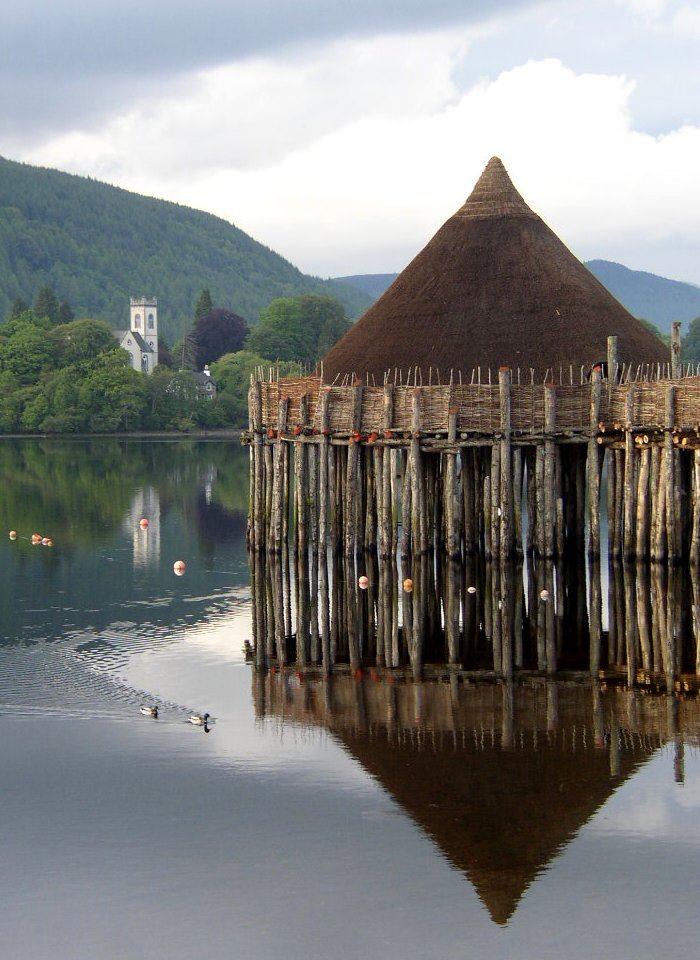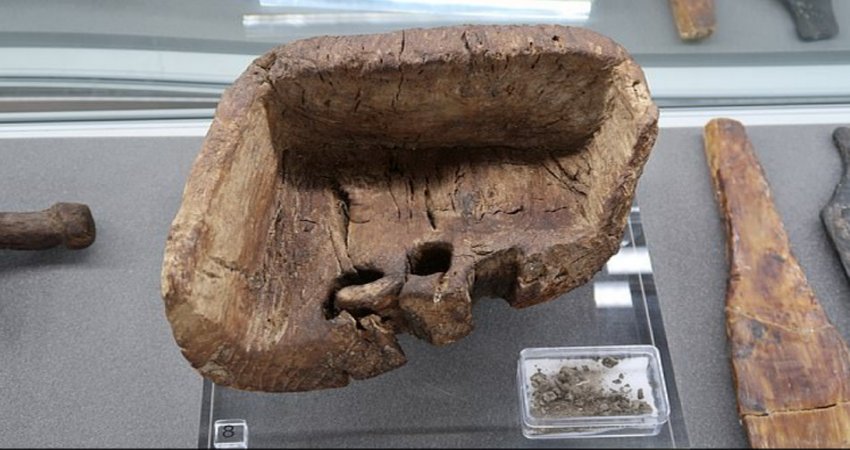Jan Bartek – MessageToEagle.com – It’s not the first time archaeologists find well-preserved food, and these discoveries are important because they help us understand how our ancestors lived and what they ate.
Ancient cheese, meat, bread, and other pieces of meals have been unearthed by scientists in the past.

Loch Tay, Perthshire, Scotland. Credit: Public Domain
Now, archaeologists in Scotland report a new startling discovery. At the bottom of Loch Tay, a freshwater loch in the central highlands of Scotland, in the Perth and Kinross and Stirling council areas scientists found traces of butter that dates back 2,500 years to the Iron Age.
The best news is the Iron Age butter is still in excellent condition. It was most likely one of the dishes left by Scotland’s ancient water dwellers who made their homes on Loch Tay.
Archaeologists have previously found lakeside settlement of least 17 crannogs or Iron Age wooden houses in this area.

Reconstructed crannóg on Loch Tay. Credit: Public Domain, CC BY 2.0
“Built from alder with a lifespan of around 20 years, the structures simply collapsed into the loch once they had served their purpose, taking the objects inside with them.
The crannogs were considered high-status sites which offered good security as well as easy access to trading routes along the Tay and into the North Sea,” Daily Mail reports.
At the bottom of the lake, there is very little light, oxygen or bacteria to break down anything organic which explains why the butter is so well-preserved after 2,500 years.
“When they started excavating, they pulled out this square wooden dish, well around three-quarters of a square wooden dish, which had these really nice chisel marks on the sides as well as this grey stuff,” Rich Hiden of the Scottish Crannog Centre said.
Rich Hiden of the Scottish Crannog Centre says conditions in the loch had preserved the find because ‘there is very little light, oxygen or bacteria to break down anything organic’. Credit: Scottish Crannog Centre
It’s not entirely certain but it’s assumed the holes in the bottom of the wooden dish were used for the buttering process.
Perhaps ancient Scottish water dwellers experimented with the butter and turned into cheese? We may never know, but anything is possible.
Analysis on the matter found it was dairy material, with experts believing it likely originated from a cow. Credit: Scottish Crannog Centre
“This dish is so valuable in many ways. To be honest, we would expect people of this time to be eating dairy.
In the early Iron Age, they had mastered the technology of smelting iron ore into tools so mastering the technology of dairy we would expect.
So while it may not surprise us that they are eating dairy, what is so important about this butter dish is that it helps us to identify what life was like in the crannogs and the skills and the tools that they had.
The best thing about this butter dish is that it is so personal and offers us such a complete snapshot of what was happening here,” Hiden said.
See also: More Archaeology News
“’It is not just a piece of wood. You look at it and you start to extrapolate so much.
If you start to pull one thread, you look at the tool marks and you see they were using very fine chisels to make this kind of object.
They were probably making their own so that gives another aspect as to how life was here,’ he added.
One wonders what more ancient discoveries archaeologists excavating the Loch Tay can bring us.
Written by Jan Bartek – MessageToEagle.com – AncientPages.com Staff Writer







